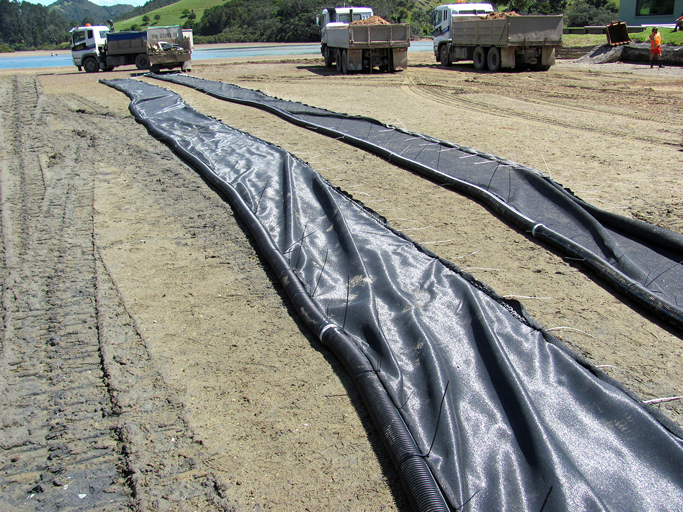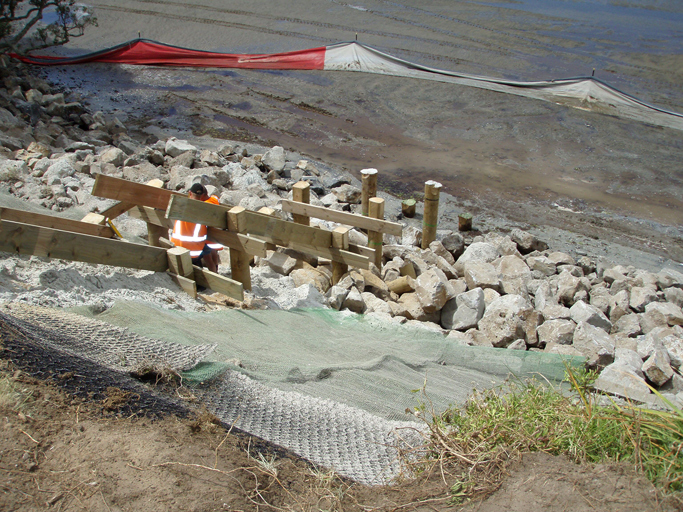Guidelines - construction work in the coastal marine area
Meeting your resource consent requirements, minimising environmental effects
If you're doing construction in the coastal marine area – whether you're the consent holder or the contractor – there are some important things you need to know.
These guidelines are designed to help you:
- Understand and comply with your resource consent
- Take the right steps to minimise environmental effects.
Before you start
- Read and understand consent conditions
- Plan your work inline with the consent
- Contact council prior to starting
During construction
- Have an oil spill on site
- Install and maintain sediment controls
- Use specified materials and build to plan
- Only use heavy machinery as per consent conditions
- Fence off highly sensitive areas
If problems occur
- Clean up any accidental discharges immediately
- Notify 24/7 Environmental Hotline (0800 504 639) immediately
- If any changes occur during the construction process or you have any problems, talk to your assigned monitoring officer
When work is complete
- Inform council and supply any other information required by the consent
- Mark structure with number as per consent
- Maintain the structure
Your resource consent will contain requirements to minimise the environmental impacts of your construction works. Specifics vary from consent to consent, but you'll generally be required to:
Contact council before you start
Most consents require a site visit with your council monitoring officer before you start work. You’ll talk about consent conditions, construction methods and sediment controls.
P: 0800 002 004 | E: info@nrc.govt.nz
Stick to agreed location and timing
Resource consents are specific to a certain activity at a particular location. Sometimes they also specify when the works can happen – for example, at certain times of year.
Minimise discharges and disturbance
Consents usually have strict limits on any discharges and disturbance allowed during construction. Using appropriate construction materials, sediment controls, and precautions with heavy machinery will help you meet your consent conditions.
Make sure you understand the specifics of your consent, and contact your council monitoring officer if you're unsure. Both the consent holder and the contractor are responsible if consent conditions are breached.
The coastal environment is extremely sensitive to disturbance, so special care must be taken when working in it – it’s different to working on land.
The biggest risks are sediment discharges during construction activities and physical disturbance from heavy machinery.
Poor water clarity can have serious effects on the wellbeing of fish, shellfish, and aquatic plants. It can also make shellfish unsafe for eating, and impact on swimmers and other recreational users.
Always consider the immediate area before and during the construction phase. There are important wildlife species in Northland that require protection, including rare birds, seagrass beds, and saltmarsh. Ensure no birds are breeding near the construction site. Any sea grass and/or saltmarsh must not be disturbed during construction; these can be fenced off.
In the event of new archaeological sites (for example, middens) being discovered, works must stop and you must contact Heritage New Zealand Pouhere Taonga - www.heritage.org.nz who will instruct you with any further requirements.
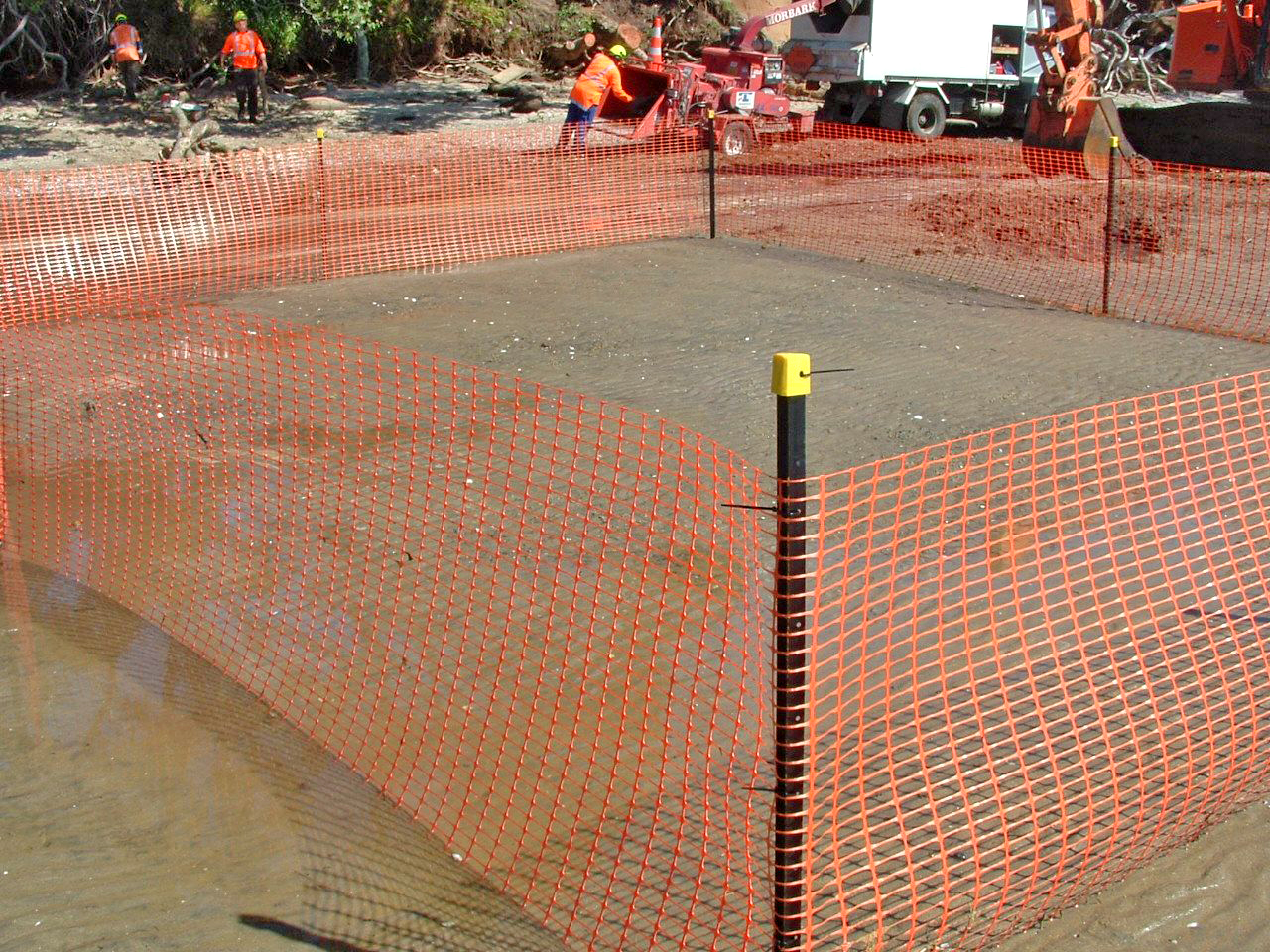
Sea grass bed fenced off to avoid disturbance from heavy machinery.
Sediment controls are normally required when you're working in the coastal marine area. These may be proposed during the consent process or developed, with your monitoring officer, at the time of construction. Sediment is a contaminant that can seriously affect aquatic life, and discharging it into the coastal marine area is illegal. Your sediment controls should be:
- Planned carefully – consider locations, weather and tide conditions;
- Fit for purpose – sediment controls used on land, such as TP90 guidelines, may not be effective in the water;
- Put in place before you start work; and
- Maintained for the duration of construction.
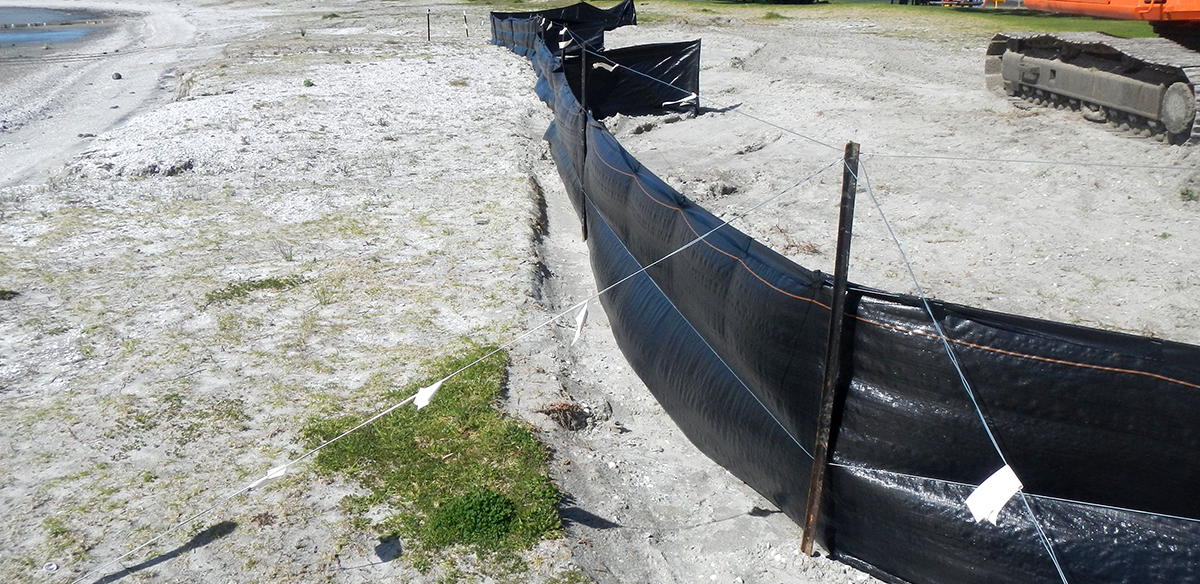
Fixed silt fence.
Fixed silt fences may not be suitable for water
They're designed for use on land, not in water. Water movement (from tides, current, or waves) may destroy a standard silt fence.
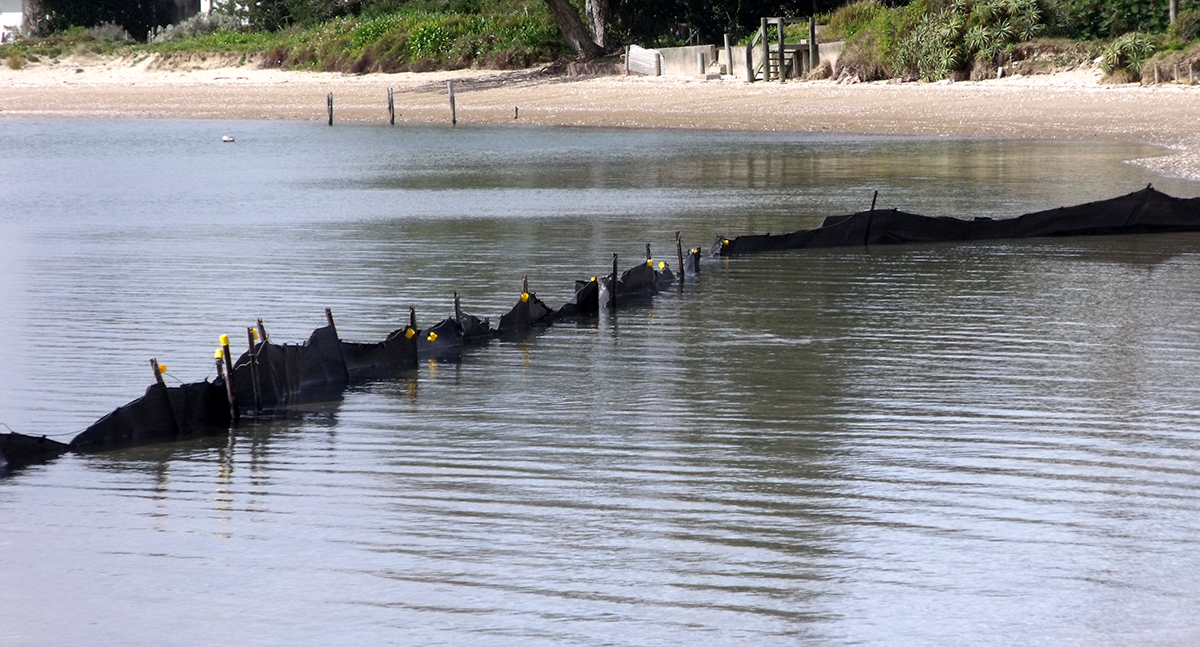
Partially submerged silt fence.
Use floating silt curtains in the water
A good floating silt curtain will minimise sediment discharges and require less time and money in maintenance than a fixed silt fence or a poorly-constructed floating silt fence.
These can be purchased pre-made or constructed yourself using suitable materials. Ask your council monitoring officer or your geotextile provider for advice if required.
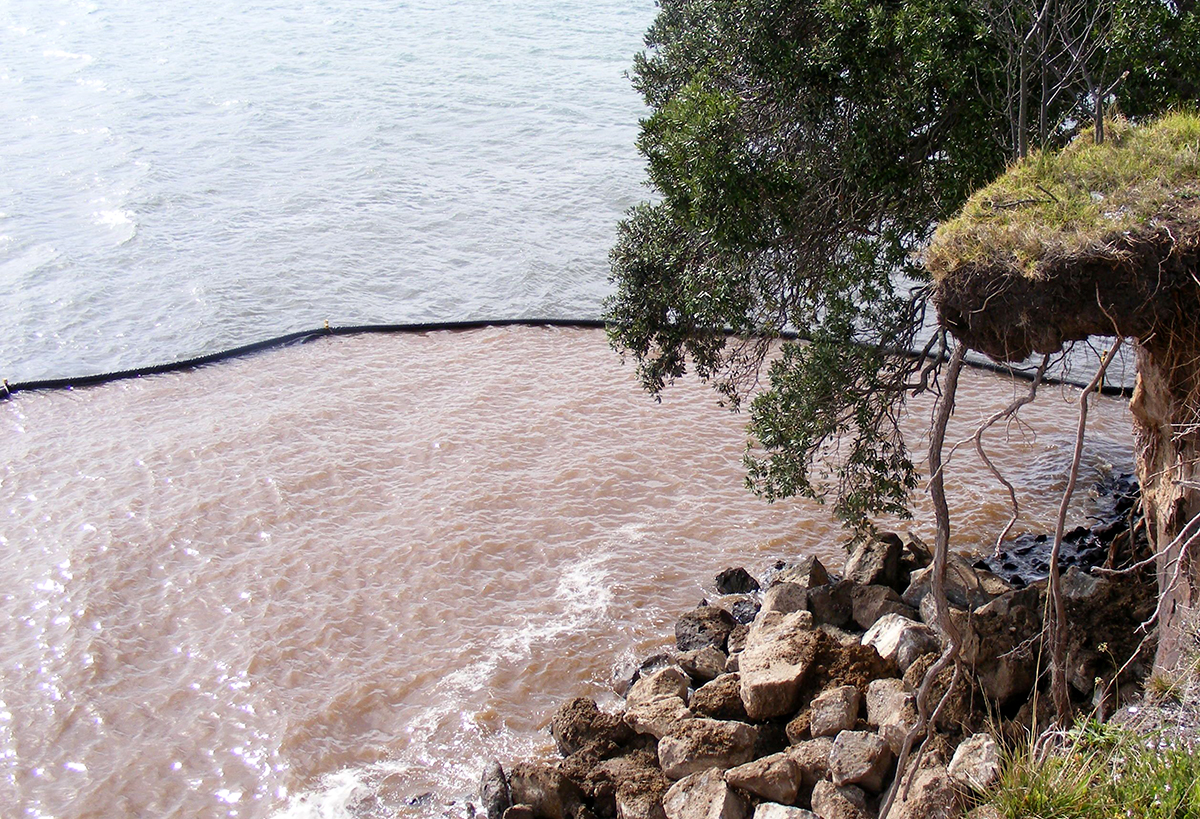
Silt curtain minimising sediment.
Keep your sediment controls well maintained
Check and maintain your sediment controls regularly to ensure they're doing the job properly throughout your construction.
You generally need resource consent to use heavy machinery in the coastal marine area.
The use of heavy machinery for construction and maintenance may be included in your resource consent (if in doubt, always check with your council monitoring officer before proceeding). To minimise the environmental effects of using heavy machinery and to meet your consent requirements:
- Do your refuelling/maintenance off-site. To prevent discharge of hazardous substances, you're not allowed to refuel, fix or maintain machinery in the coastal marine area (or anywhere that discharges could get into the coastal marine area).
- Always check the ground and watch the tide. Ensure that the substrate you will be working on is suitable for the heavy machinery. Have a contingency plan to retrieve equipment rapidly from the coast in case of it getting stuck.
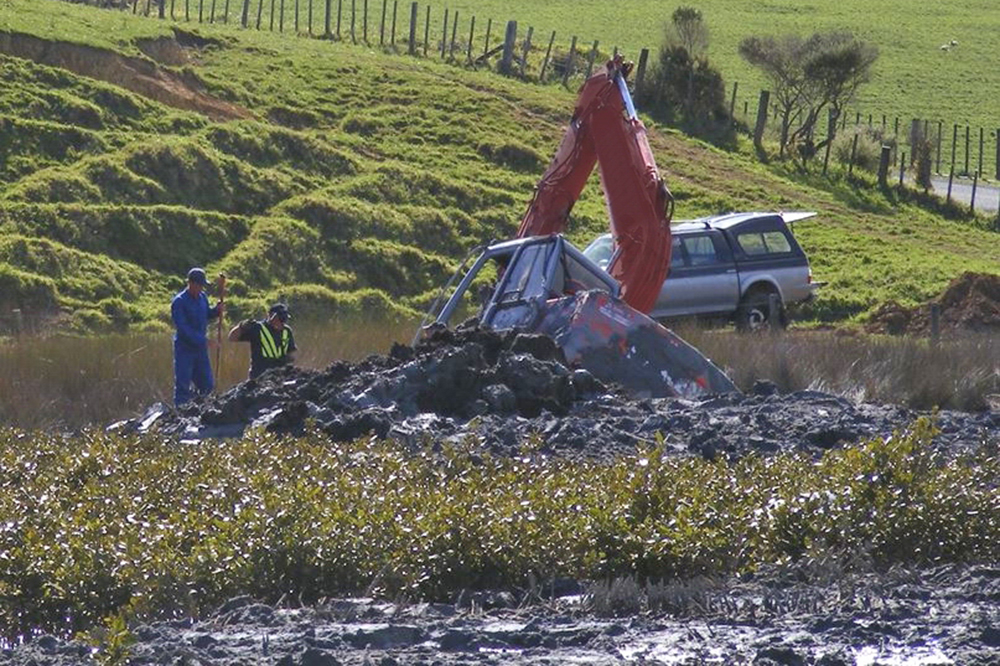
Ensure that the substrate you will be working on is suitable for the heavy machinery.
Using heavy machinery on the foreshore requires you to have an oil spill kit on site during construction works in case of accidental oil or fuel spill.
These come in all shapes and sizes and it is important your spill kit is fit for purpose.
Always ensure the structure is built according to the approved consent plan.
Your consent will usually specify materials to be used – for example, placement of geotextile cloth, size and colour of rocks to be used and planting of vegetation on completion of works. Using material from the foreshore is prohibited unless it is authorised by your resource consent.
Note: you may also require building consent (obtained from your local district council).
If any accidental discharges occur during the construction phase you should stop any further discharges (if possible) and inform council immediately by either contacting the monitoring officer or the council's 24/7 Incident Hotline on 0800 504 636.
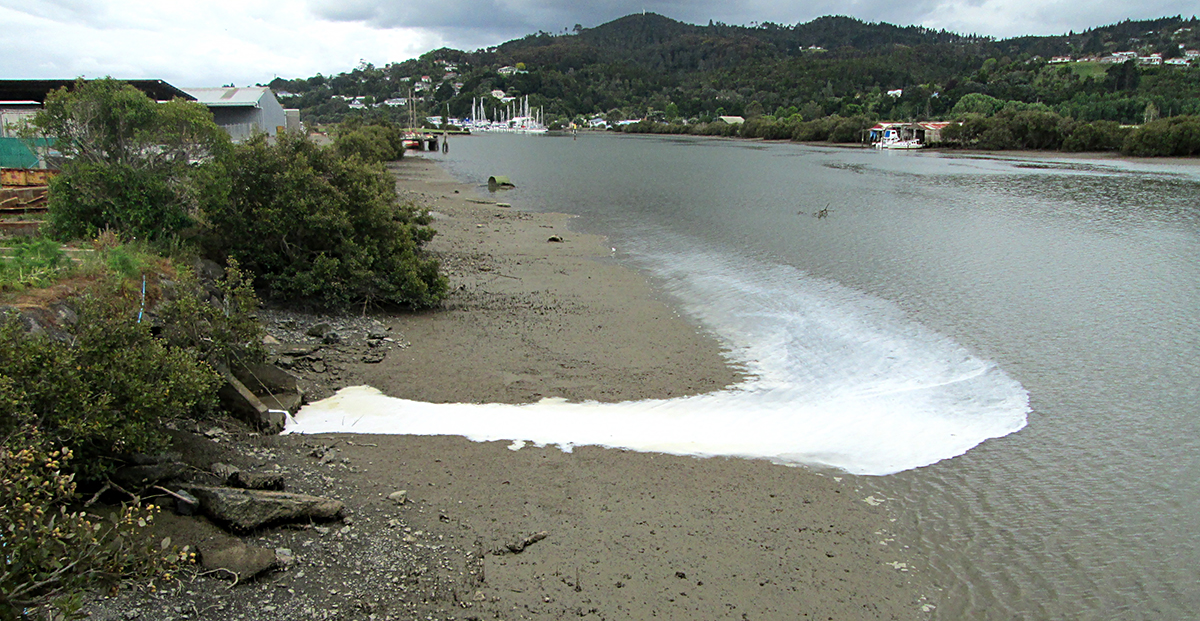
White paint discharge into the channel.
On completion your consent will require you to mark the structure with a number specified in your consent. You are required to maintain the structure for the duration of the consent. Council monitors all coastal structures on a regular basis.
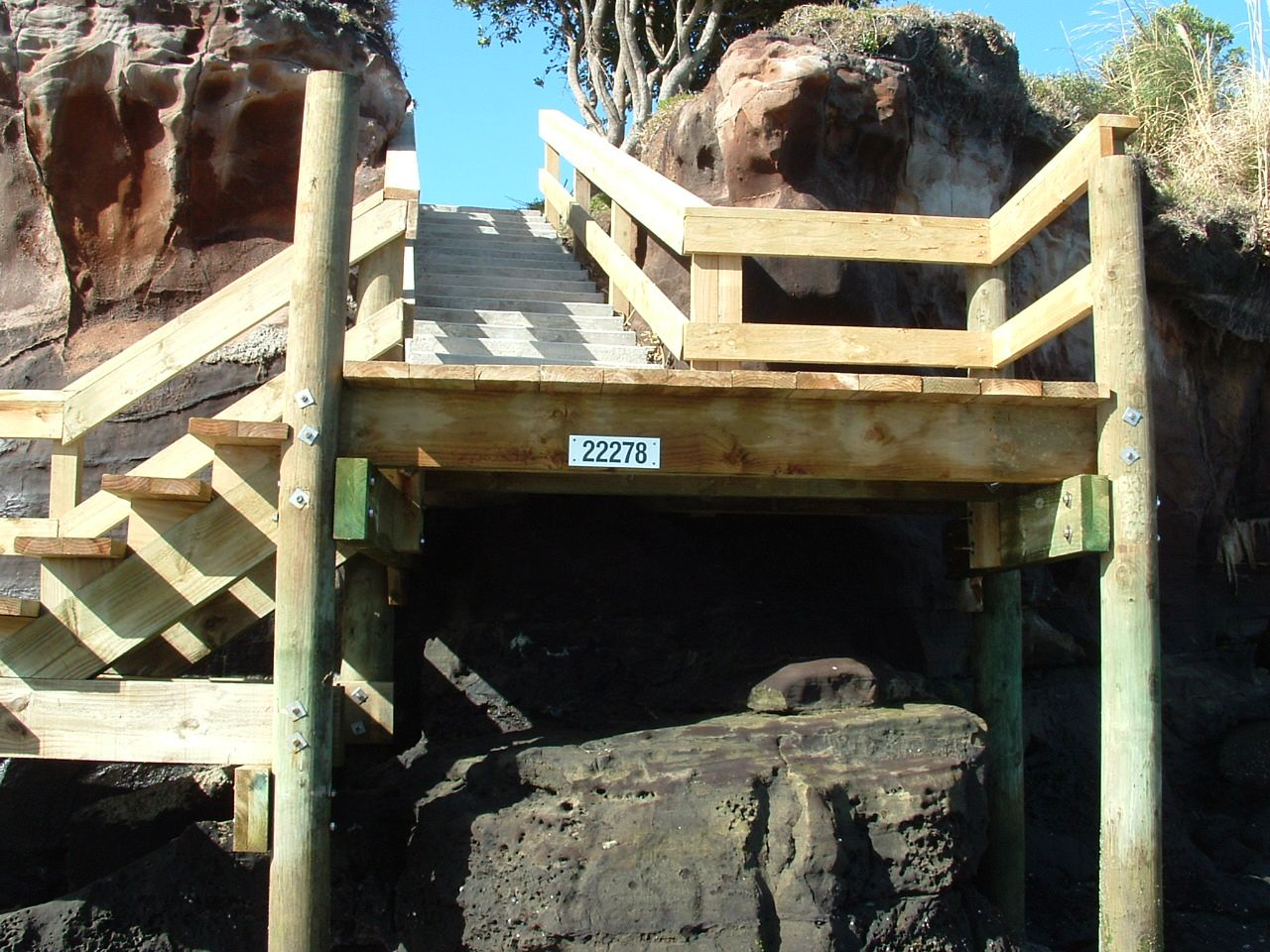
Completed structure with number associated with the consent.

